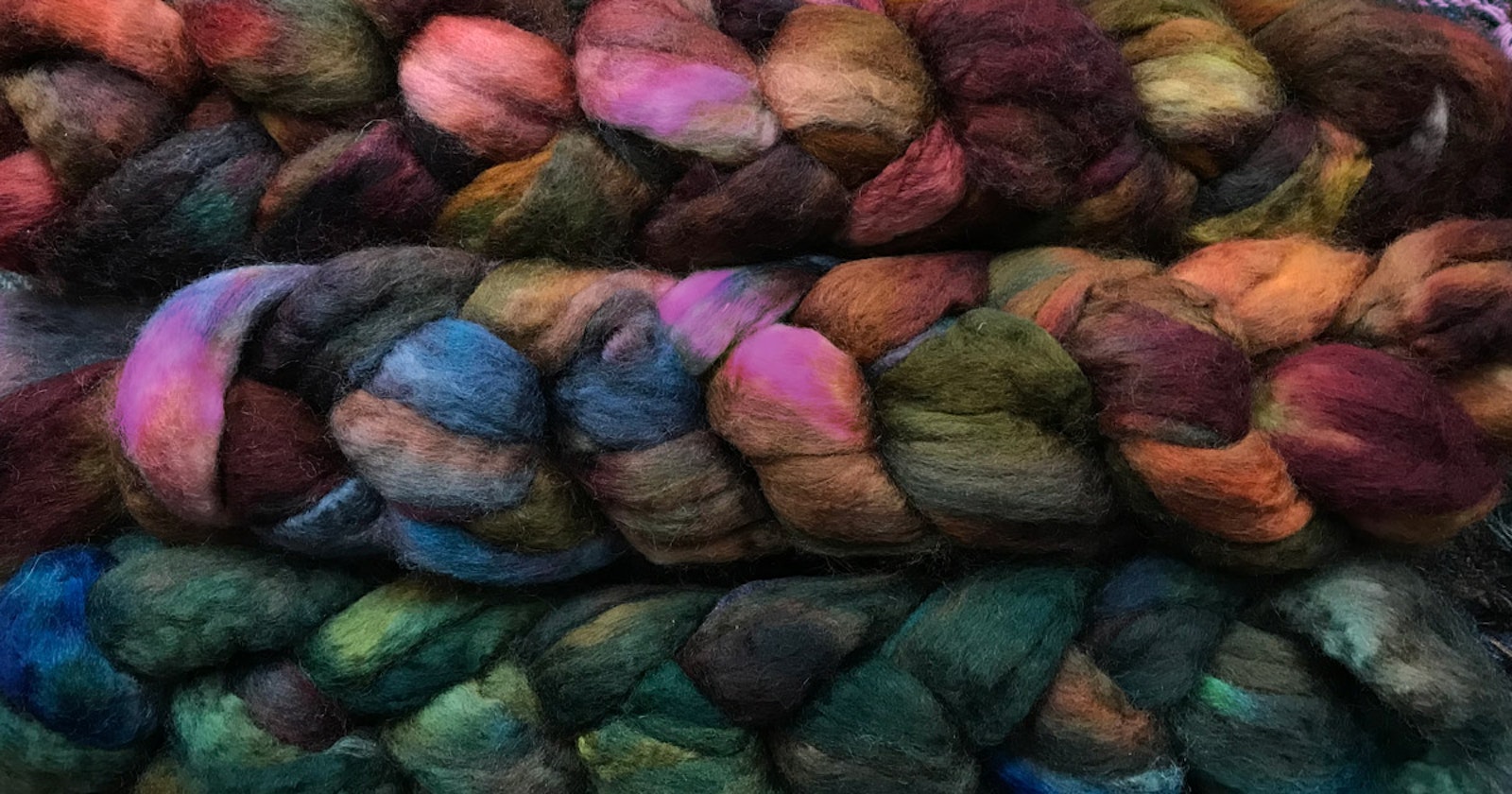(And I’m not just talking about the classic orange-and-black of the upcoming Halloween holiday).
 | |
| Deb Menz (wearing shockingly few colors) demonstrates the relationships between colors. |
See how the colors pop against the white and black but fade in and out against the grays? Deb Menz can help you understand why.
I have a confession to make: I’m a matchy-matchy girl. ![]()

When I put together an outfit, I tend to wear a blue print shirt with blue pants, possibly with blue shoes too. I might mix it up with a neutral—throw on brown pants instead—but when it comes to pairing colors from different families, I’m hopeless. (My favorite solution? Jeans.) When I picked out the yarns for a striped sweater years ago, it took quite a few rows before I realized that that rose, amethyst, and cream made me look like an overgrown cartoon princess. So I stick to neutrals and matching and one good blue shirt.
But that’s no way to build a crafting life.
There are some people who can look at colors and just see which ones will go together. There are others who approach color scientifically, using a system to describe colors and relationships—color theory, they call it. But even though I don’t consider myself intuitively color-savvy, color theory sounds pretty scary to me. (Almost anything with the word “theory” in it sounds like more work than I want to do . . . Can you think of a theory that’s actually fun?)
I think Deb Menz approaches color in both ways: she has an artist’s eye for which colors look good together that comes to her easily, but she can also break it down. And boy, is she not afraid of color! She recently showed me a pair of new running shoes that had no fewer than seven colors. Her two new videos break color into more accessible, friendly chunks than I’d ever thought possible. Take her Color Magic: Color Families video and its discussion of undertones. I’ve never understood how there could be a warm blue, but by talking through examples on a whole variety of mediums, Deb got me to pick the greeny-blue (warmer) from the violet-blue (cooler)—even though that distinction was completely counterintuitive to me.
Deb’s recurring theme is to be dedicated to playing with color, but what’s unusual about her videos is the way she guides you in different paths of color exploration. If you lock me in a room with a box of watercolors and a brush, I frankly wouldn’t know what to do, but her advice leads me step by step toward greater confidence.


